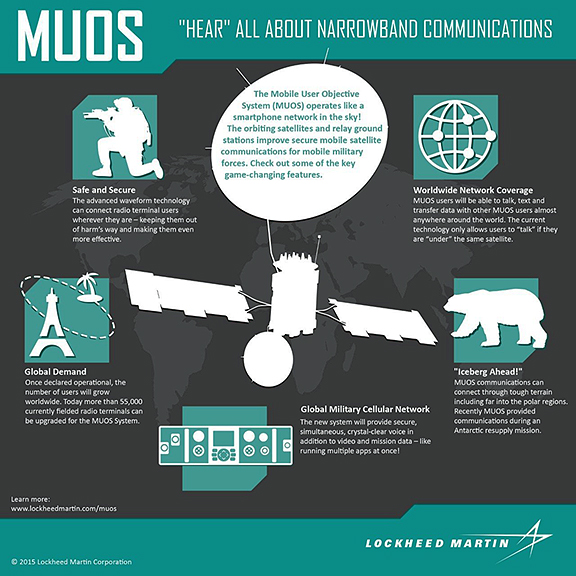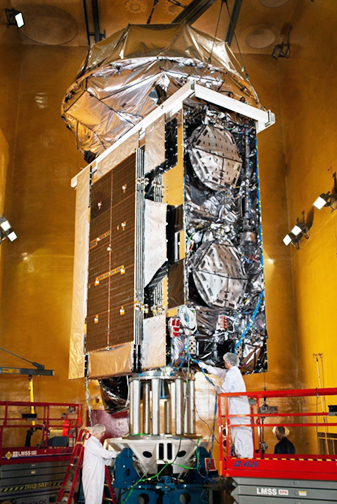

The Mobile User Objective System (MUOS), developed by prime contractor Lockheed Martin (NYSE: LMT) with ground systems provider General Dynamics Mission Systems (NYSE: GD), was deemed operationally effective, operationally suitable, and cyber survivable, following successful completion of its Multi-Service Operational Test and Evaluation (MOT&E).
This summer’s rigorous MOT&E, conducted by the U.S. Navy’s Commander, Operational Test and Evaluation Force, included participation from the U.S. Army and the U.S. Marine Corps. Mobile forces have been conducting early testing and training on MUOS since the network was approved for Early Combatant Command use in July 2016.

In August 2018, U.S. Strategic Command approved MUOS for expanded operational use to include non-combat operations – such as humanitarian response, disaster relief and further training. The successful MOT&E now makes MUOS’ advanced communications capabilities fully available to the tactical warfare environment.
Comprised of five geosynchronous satellites and four geographically dispersed relay ground stations, the MUOS network brings to mobile forces new, simultaneous, crystal-clear voice, video and mission data over a secure high-speed Internet Protocol-based system.
 Users with new MUOS terminals will be able to seamlessly connect beyond line-of-sight around the world and into the Global Information Grid, as well as into the Defense Switched Network. MUOS also has demonstrated successful communication of Integrated Broadcast Service (IBS) messages.
Users with new MUOS terminals will be able to seamlessly connect beyond line-of-sight around the world and into the Global Information Grid, as well as into the Defense Switched Network. MUOS also has demonstrated successful communication of Integrated Broadcast Service (IBS) messages.

Photo of a MUOS satellite is courtesy of
Lockheed Martin.
Kay Sears, VP and GM of Lockheed Martin’s Military Space line of business, reported that MUOS is a game changer for our troops, providing incredible new voice and data capabilities with near global coverage from satellites that act like cell towers 22,000 miles above the Earth. Imagine leaping in technology from a walkie-talkie to a modern cellular phone with global reach. This is what MUOS is for the nation's troops and its network technology will provide more than 10 times the communications capacity the legacy UHF SATCOM system can provide.
Manny Mora, VP and GM for the Space and Intelligence Systems line of business at General Dynamics Mission Systems, noted that MUOS will provide a level of voice and data communications capability that warfighters have never had using legacy SATCOM systems. With voice clarity and data speed rivaling what civilians enjoy on their cellphones, MUOS delivers a tactical communications and operational advantage. Wherever the nation's forces are deployed, MUOS will be there.
The Navy's Program Executive Office for Command, Control, Communications, Computers, Intelligence and Space Systems (PEO C4 and Space Systems), and its Communications Satellite Program Office responsible for the MUOS program, are based in San Diego, California.

